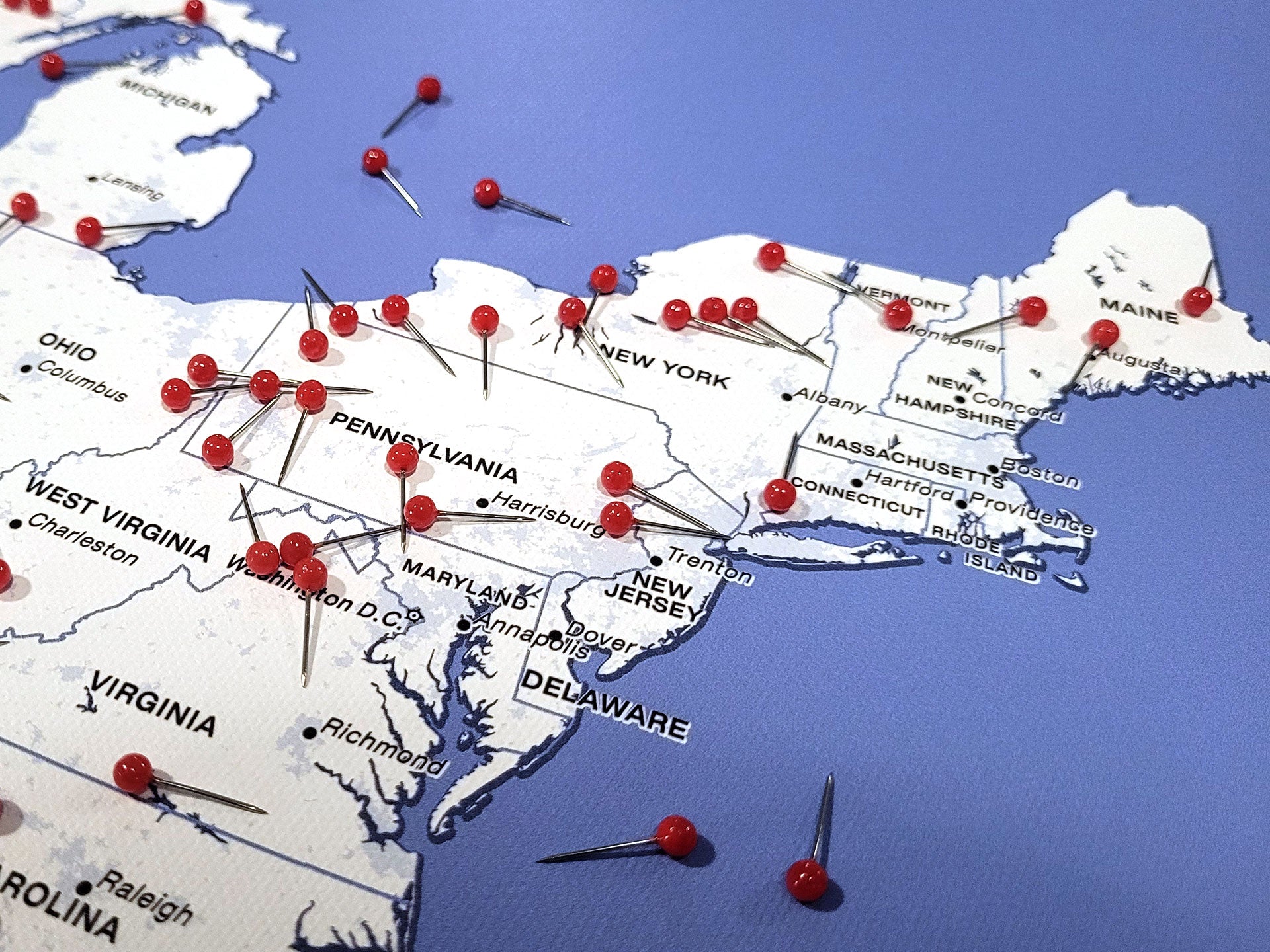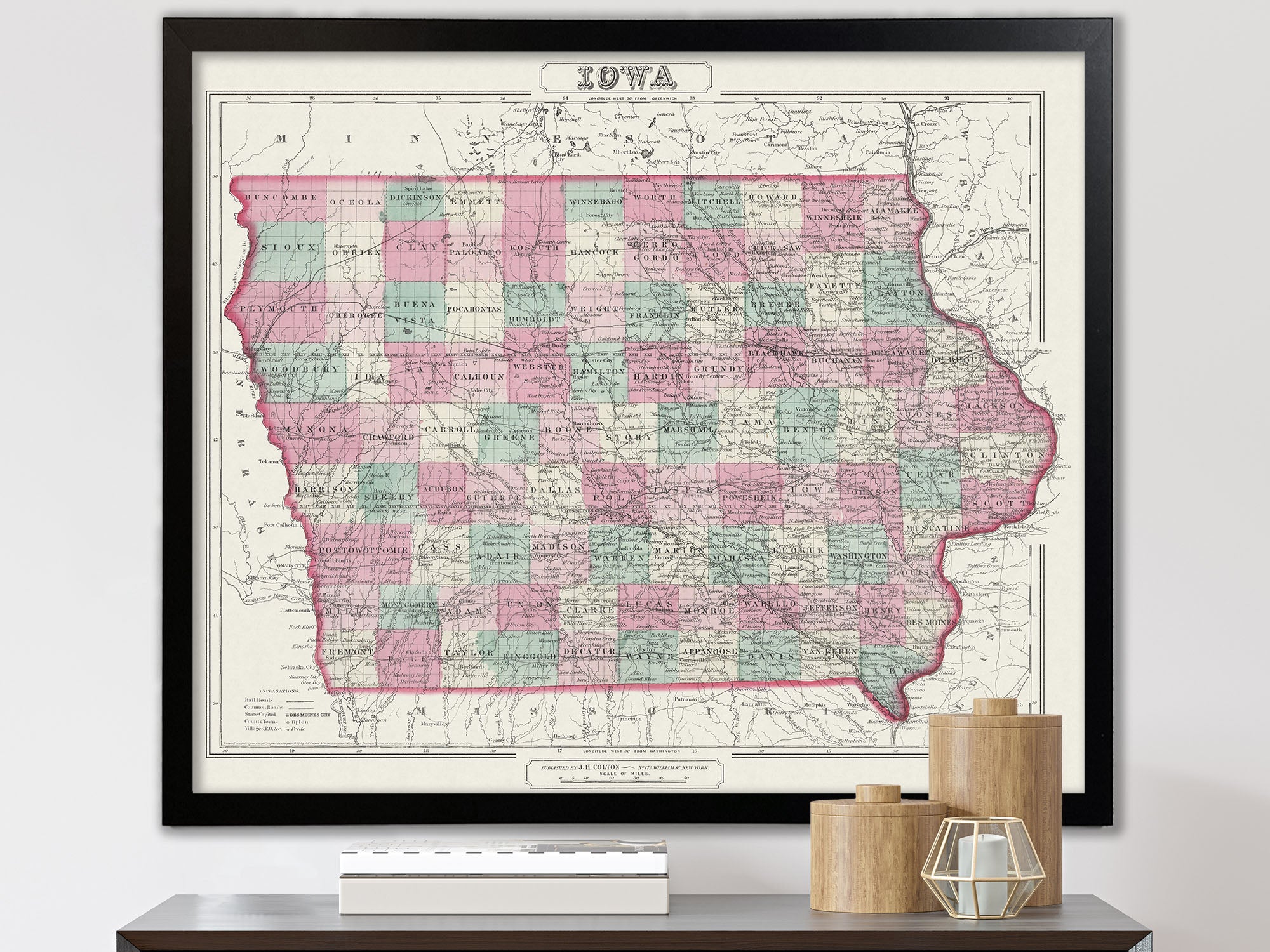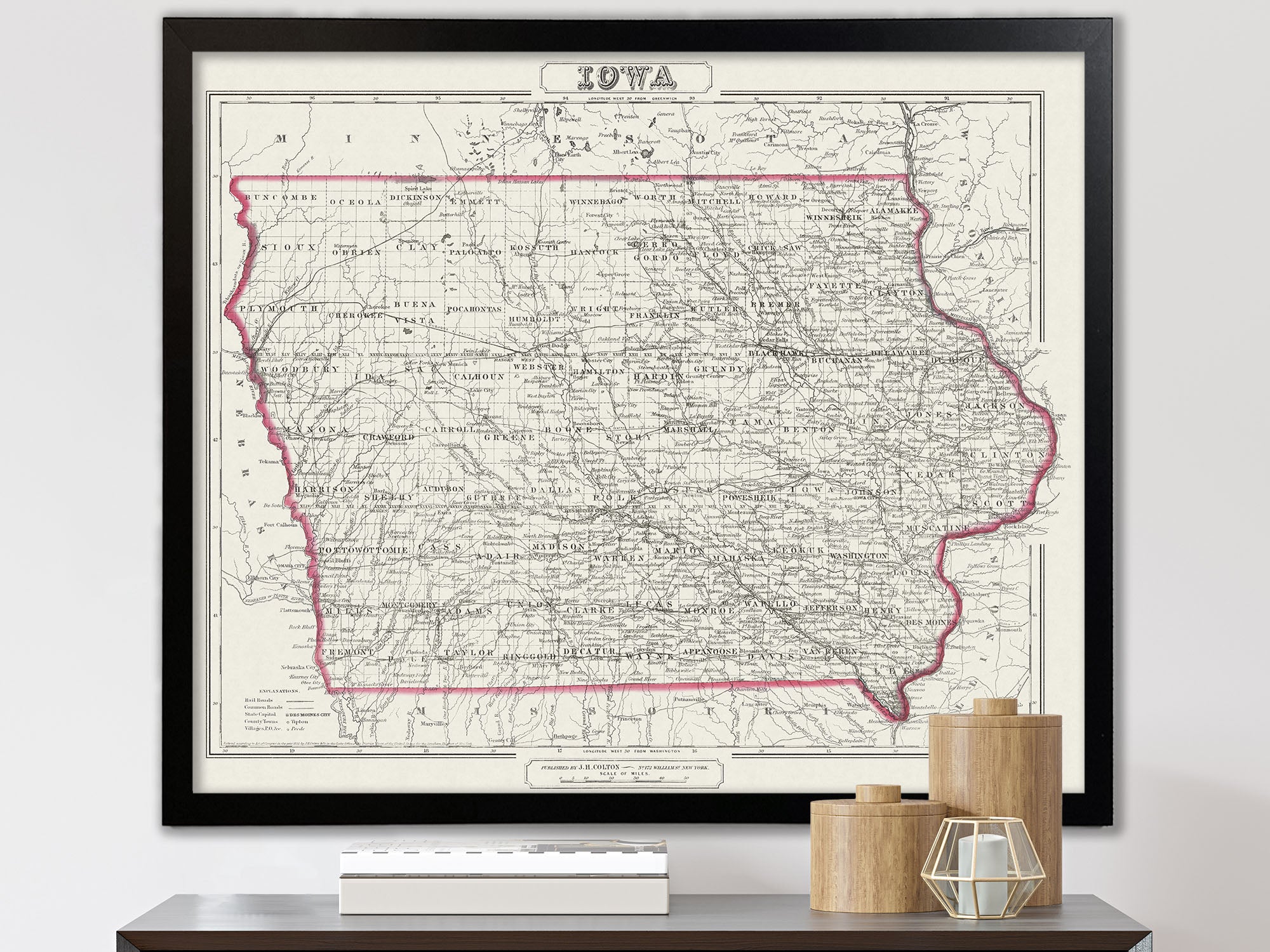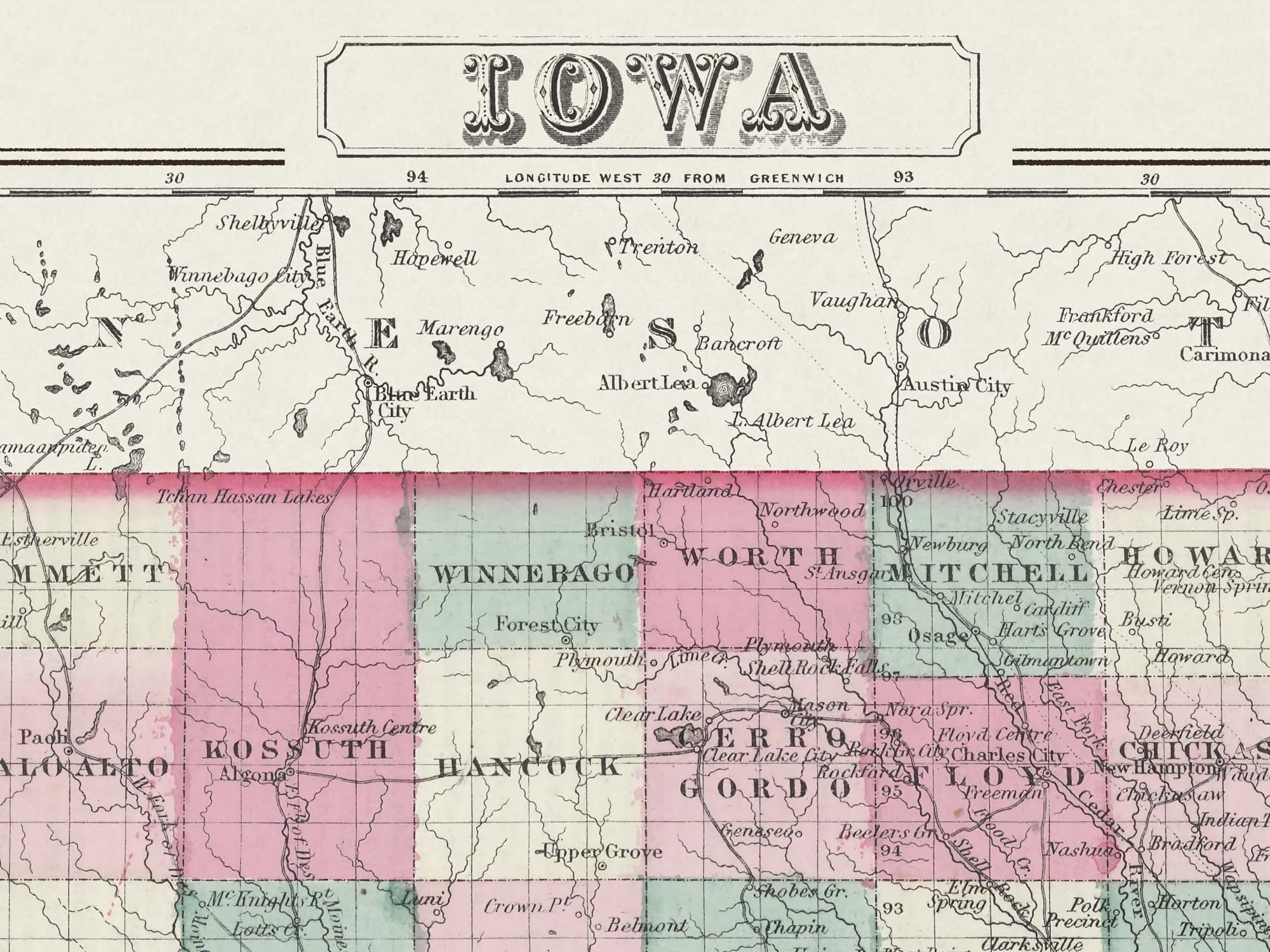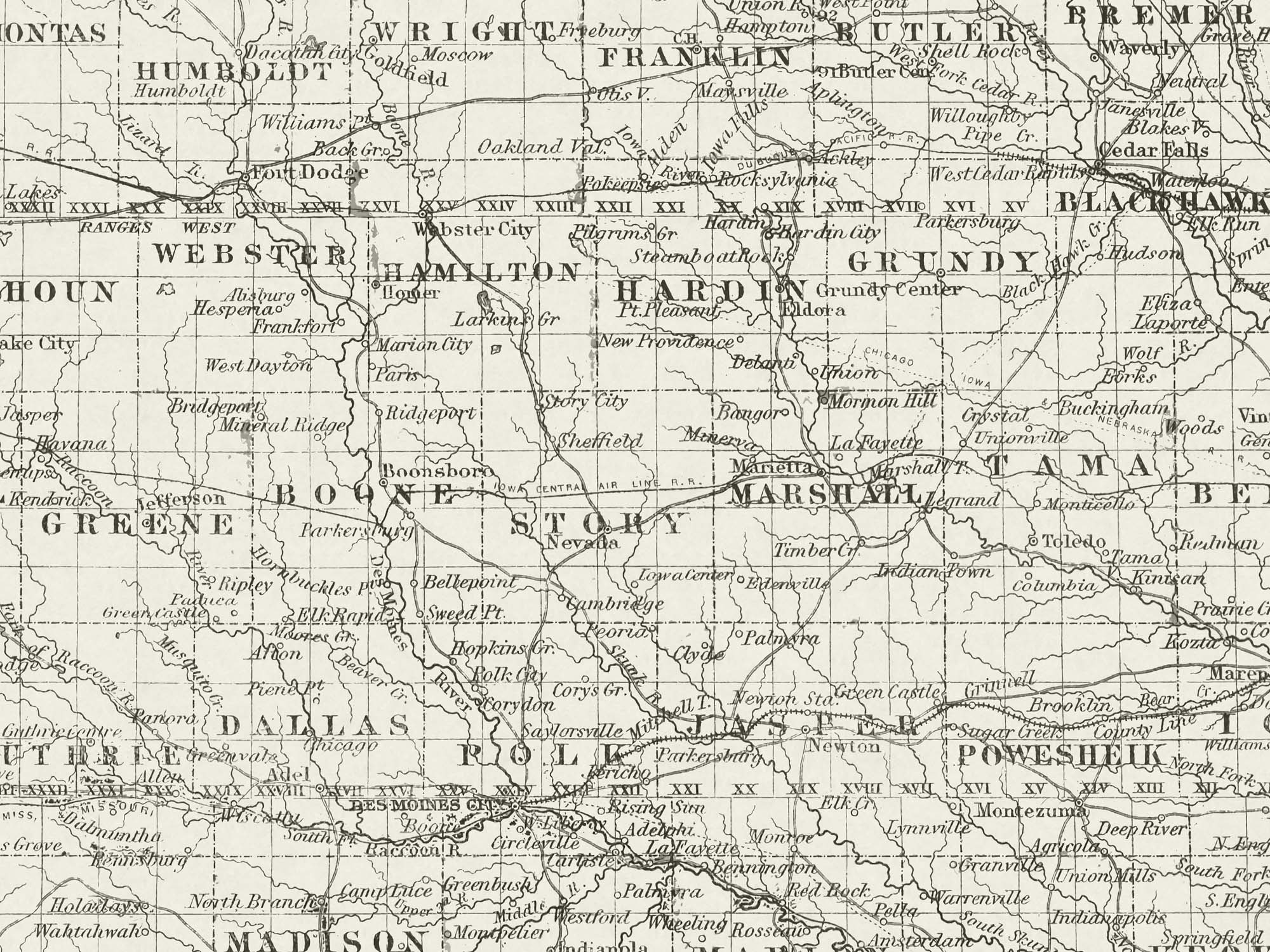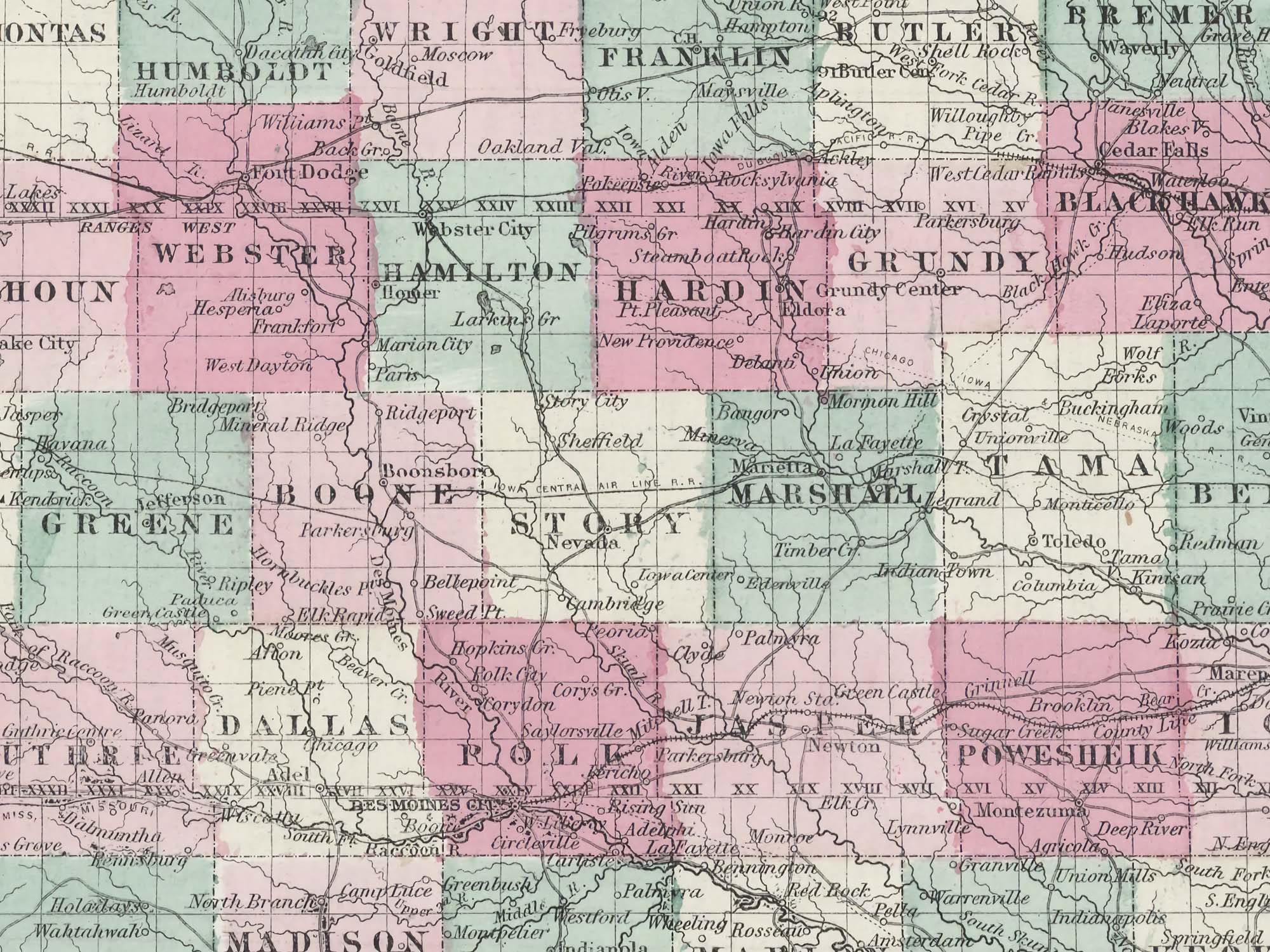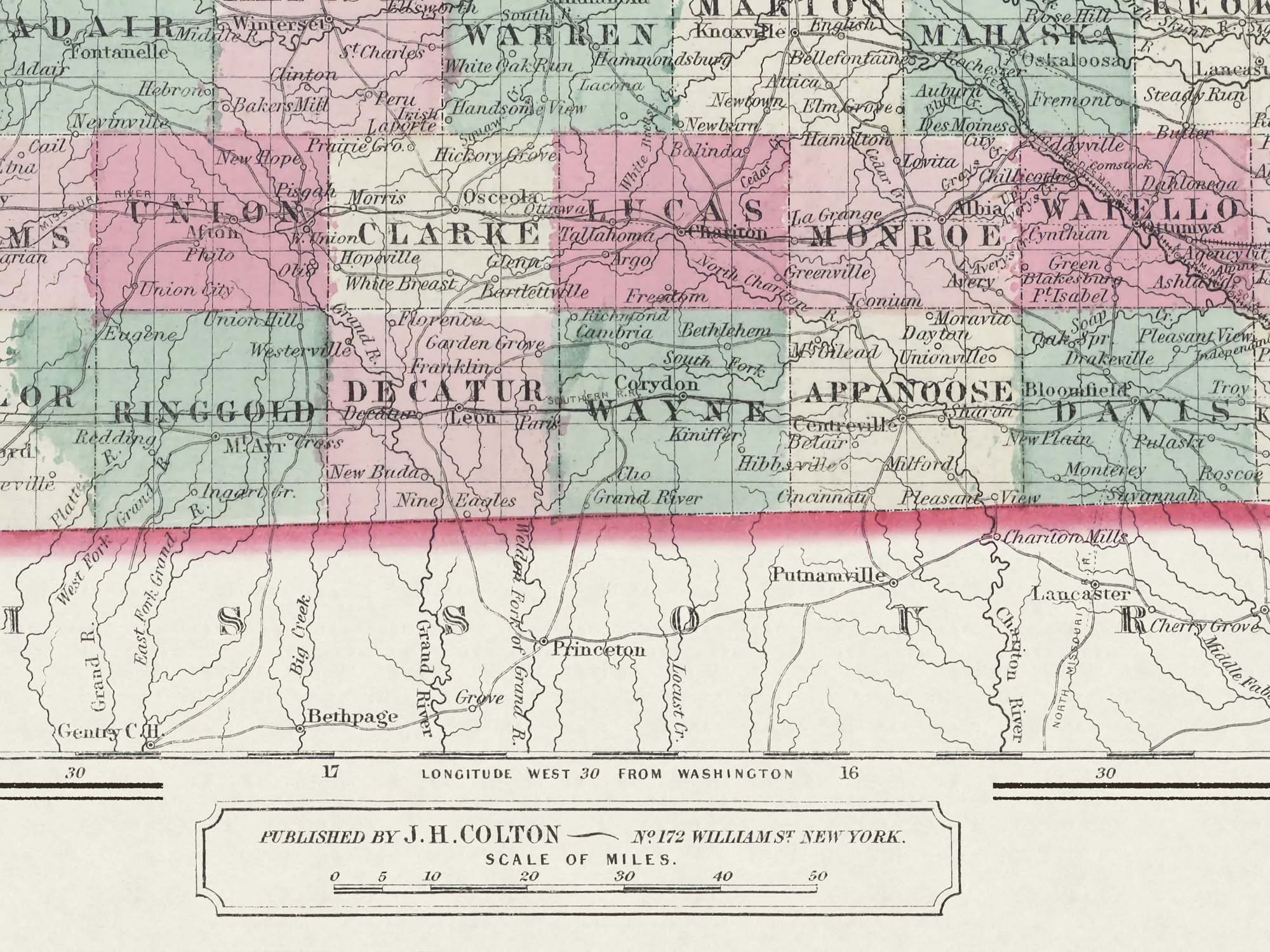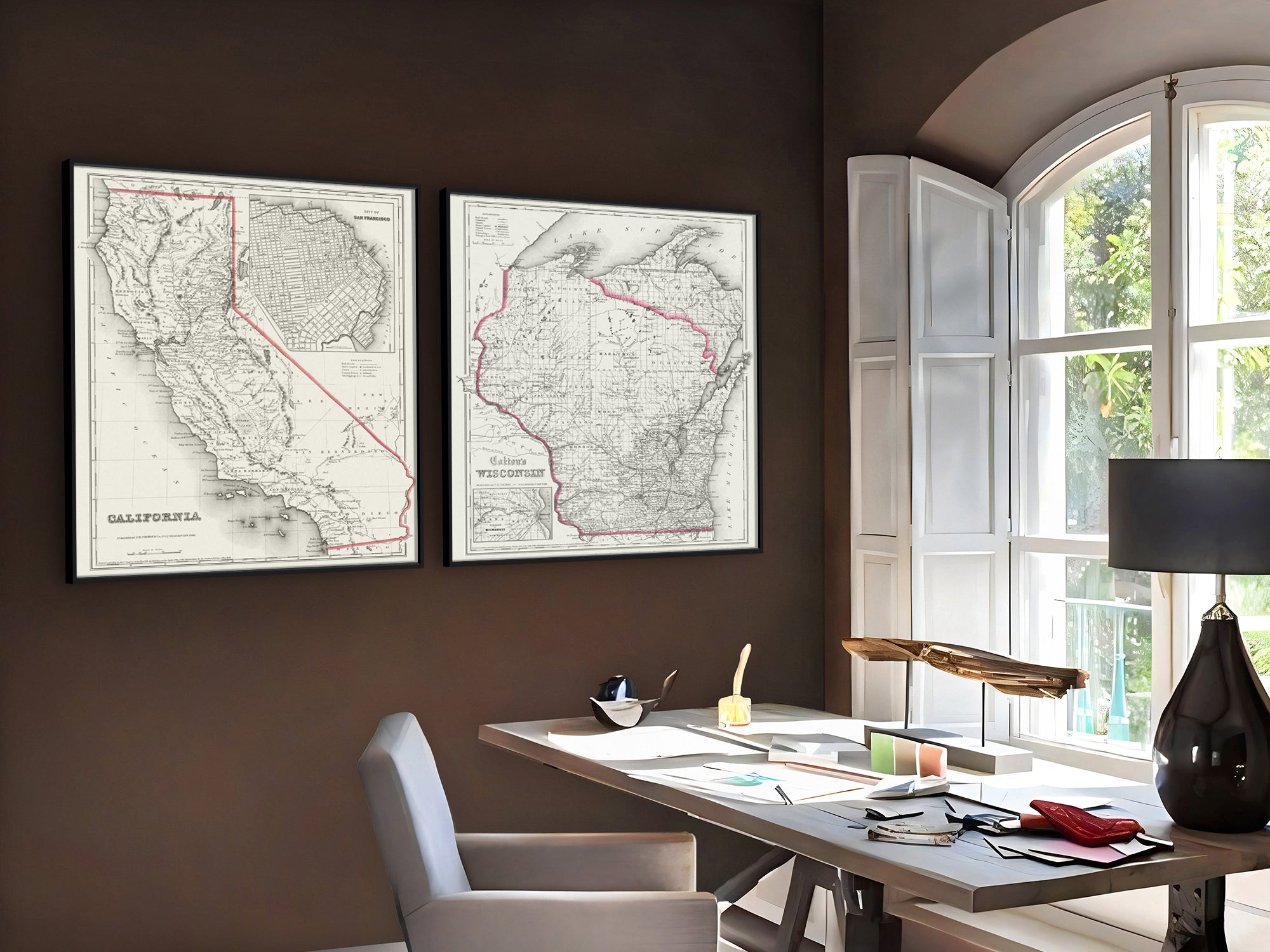This map is a faithful reproduction of the original 1850 map restored to its former glory using the latest digital imaging technology.
Antique Iowa Map
Standard maps will enter production right away, within the next business day. Larger orders may take more time.
All push pin board maps (framed or canvas wrap) include push pins, are easy to hang, and ship free in the continental US. We'll select the optimal shipping method for fast delivery.
For personalized maps we collaborate closely to guarantee satisfaction. Expect a proof to be sent to you. Your swift responses will facilitate the production and shipping process.
If there are any problems with your map we will take care of you. Returns for all maps are straightforward and hassle-free.
For personalized maps, engaging with the email proofs we send ensures that the final product meets your expectations precisely.
We have 30+ years of cartography experience, meticulously craft each order by hand to ensure excellence, and 100% guarantee your satisfaction. We produce maps that are built to last, with state of the art production and archival quality materials.
Customize with quotes, legends, or dedications using "Personalize Map" options to craft your masterpiece map. Or reach out to us if you don't see the option you want.
We collaborate with you from design to approval of your proof so that you are 100% happy before we print and ship.
Our excellent customer service is always open to you.
Restored 1850's Map
Fine Art Quality
Impressively produced with Archival Inks, Rich Color Depth, and clear and vivid labels. We use premium matte paper.
Expert Craftsmanship
We prepare the map using Fine Art Giclee production techniques. We roll the map in a sturdy tube for shipping to provide a crease-less piece of art.
Antique Iowa Map
- Description
- Specs & Construction
About the Map: Explore the geographic history of the state of Iowa in this historic map. This map is part of our vintage USA State Map Collection showing the geography of the states in the 1850-1860s and the time of the Civil War.
Restoration: The map is a reproduction of the original map meticulously restored to its former glory using the latest digital imaging technology. Using this technology, we carefully restored the colors, torn edges, creases, smeared writings and more. We enhanced features while keeping the original character and design of the map.
This map is unframed, sold as an art print. Frames are shown for illustration ONLY.
Geographic Details: This historic map shows many details of towns, roads, railroads, and waterways in the 19th century of the United States.
Shows historic cities such as Des Moines, Cedar Rapids, Davenport and more!
Explore the historic boundaries of the cities, counties, and states that have changed over the years. Discover physical changes in the geography - such as former lakes and canals used for transportation and agriculture.
Available Sizes: For an impressive display and maximum readability, choose the largest size available.
Smaller size prints make excellent wall art in groups. Please note that there is no guarantee that small text will be legible in print.
Great Gift For: Interior Designers, Teachers, History Buffs, Anniversaries, Birthdays, Friends, Family, and many more!
Production and Shipping Times: The amount of time it takes for your map to arrive depends on where you live and how fast you approve the proof if you’ve ordered a custom map. See Production & Shipping.
Quality and Guarantee: We stand behind our work and guarantee the construction and quality. Contact us if you have any problems with your map and we will coordinate to ensure you are very happy with your purchase.
Materials and Production: This reproduction is printed on Fine Art Museum Quality Paper with giclée inks. The thick paper is archival quality and acid-free with vivid color definition.
Paper details:
- 10 mil thick
- 230 gsm weight
- Museum Quality Matte finish
Made in the USA by a USA Small Business and Professional Geographer & Cartographer.
Shipped in a tube and rolled to eliminate creases.
Why choose GeoJango Maps
- We have a lifelong passion for maps, backed by 30+ years of cartography experience and Master's Degrees in Geographic Information Systems (GIS) from Penn State University and Environmental Science from the University of South Florida.
- Our incredible investment into the design of our maps results in unparalleled detail that matters: they will educate you, and grow with you as you travel the world and track your travels—where other maps miss the mark.
- We’ve built the leading map production studio in the USA and use exclusively USA-made materials. Each pin map is proudly crafted by hand, printed by us on the finest materials, mounted on museum-quality Gatorfoam, and carefully framed just for you.
History of the Time
The 1850s were a significant and transformative period in the history of Iowa, marked by rapid economic growth, political changes, and the emergence of the state as a dynamic player in the national landscape.
Economically, the 1850s were a time of expansion and diversification for Iowa. The state's fertile soil and abundant farmland contributed to a thriving agricultural sector. Corn and wheat were major crops, and livestock farming also played a significant role. The development of railroads and waterways facilitated transportation and trade, connecting Iowa's agricultural products to markets both regionally and nationally.
The decade witnessed the growth of cities and towns, with urban centers like Des Moines and Davenport experiencing increased population and economic activity. Industrialization began to take root, particularly in the form of mills and factories that processed agricultural products. The state's economic prosperity during the 1850s laid the groundwork for its continued growth and development.
The political landscape of Iowa in the 1850s was influenced by the debates over slavery and the emerging Republican Party. While Iowa had been admitted to the Union as a free state in 1846, the issue of slavery still had implications for the state's political and social dynamics. The Republican Party's opposition to the extension of slavery into new territories resonated with many Iowans, and the party gained traction in the state.
Iowa's role in the national political arena was highlighted by its contributions to the Republican Party and the presidential elections. The state's commitment to antislavery principles and its alignment with the Republican cause marked it as a key player in the broader debates over the future of the nation.
Cultural and social changes were also evident during the 1850s. The state's commitment to education led to the establishment and growth of schools and universities. Institutions like the University of Iowa, founded in 1847, contributed to the state's intellectual and cultural development.
The 1850s also marked the expansion of settlement and infrastructure across the state. The Homestead Act of 1854 encouraged westward expansion by offering 160 acres of public land to settlers willing to improve it. This led to the further development of towns and communities and the establishment of a network of roads and transportation routes.
As the 1850s came to a close, Iowa was poised for continued growth and significance in the national context. The state's political alignment with the Republican Party and its commitment to antislavery principles positioned it as a stronghold for the Union cause during the Civil War. Iowa's contributions to the war effort, including the mobilization of troops and the supply of agricultural products, further solidified its role in shaping the nation's history.
In conclusion, the 1850s were a transformative period in the history of Iowa, characterized by economic growth, political changes, and the state's emergence as a significant player on the national stage. Iowa's commitment to antislavery principles, its contributions to the Republican Party, and its role in the Civil War showcased its evolving identity and influence within the broader narrative of American history.






